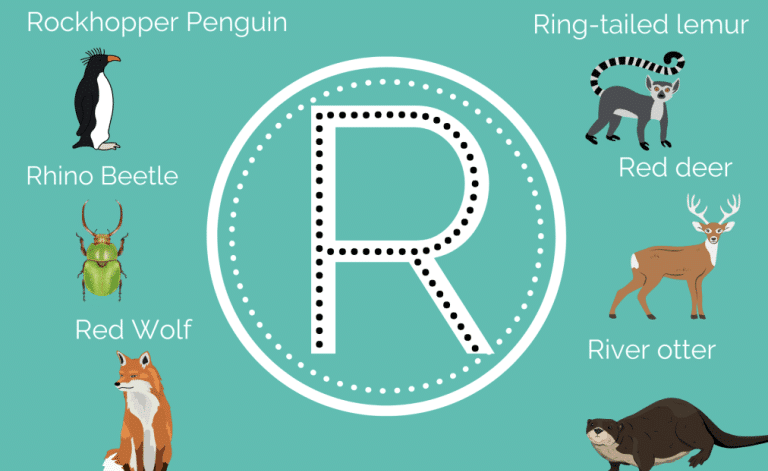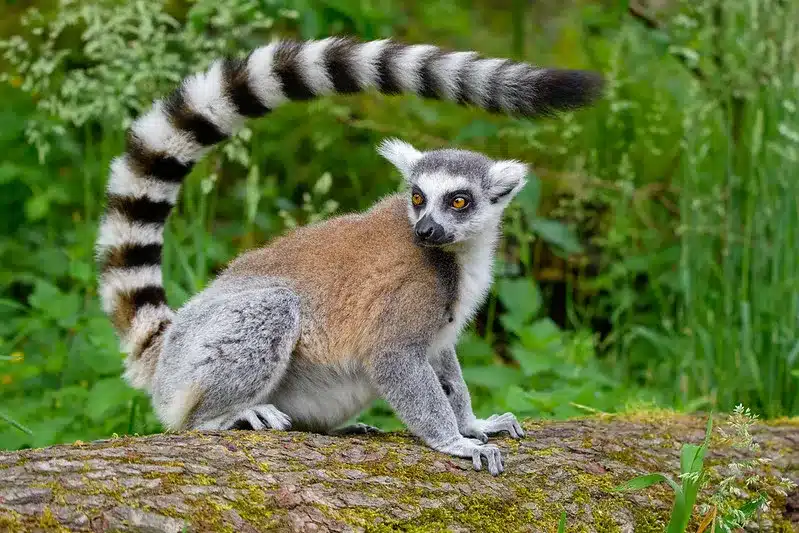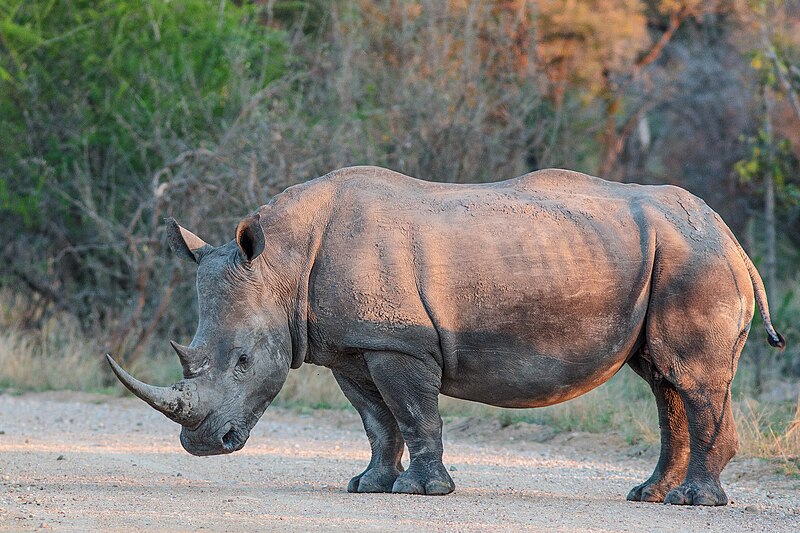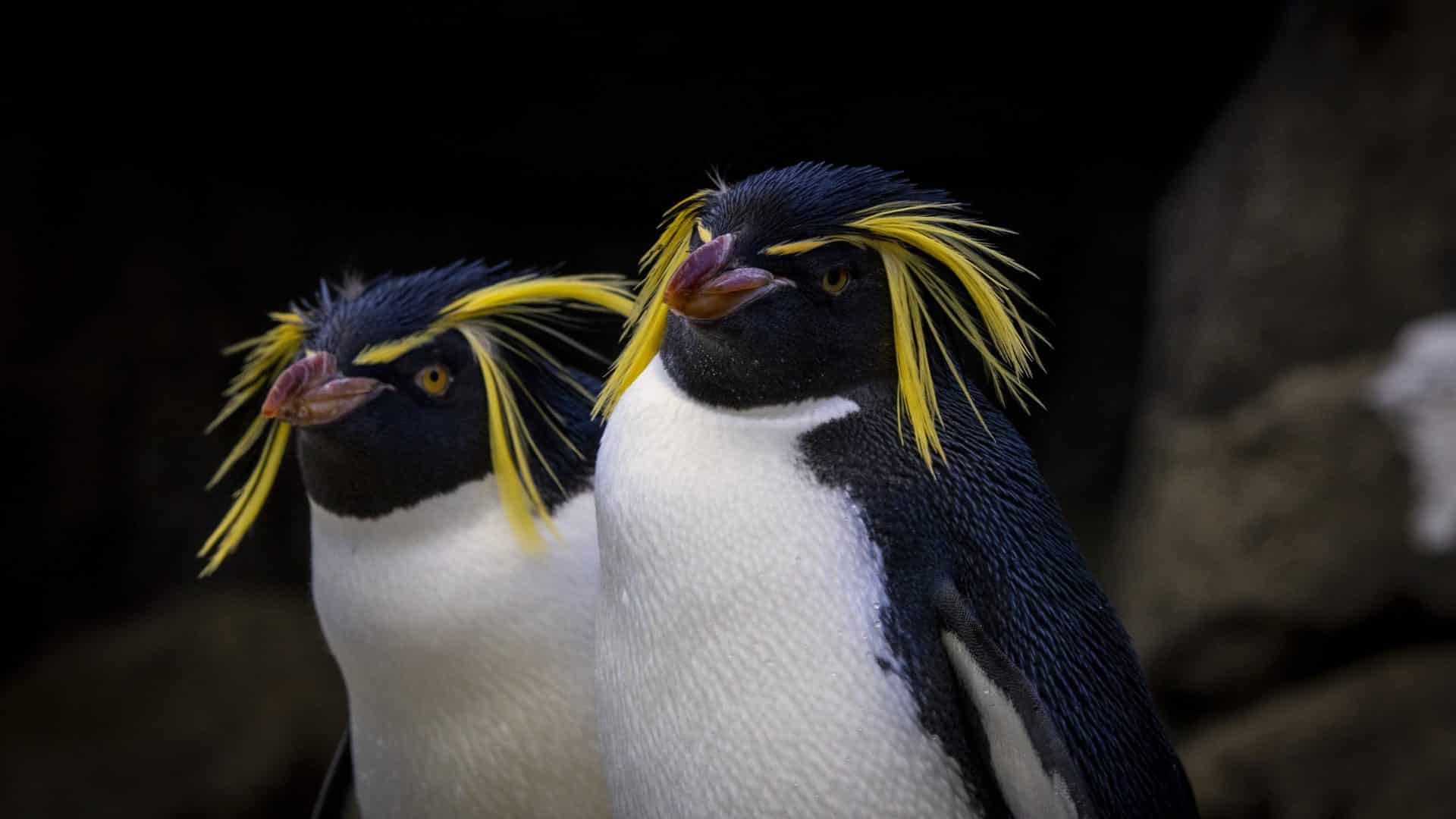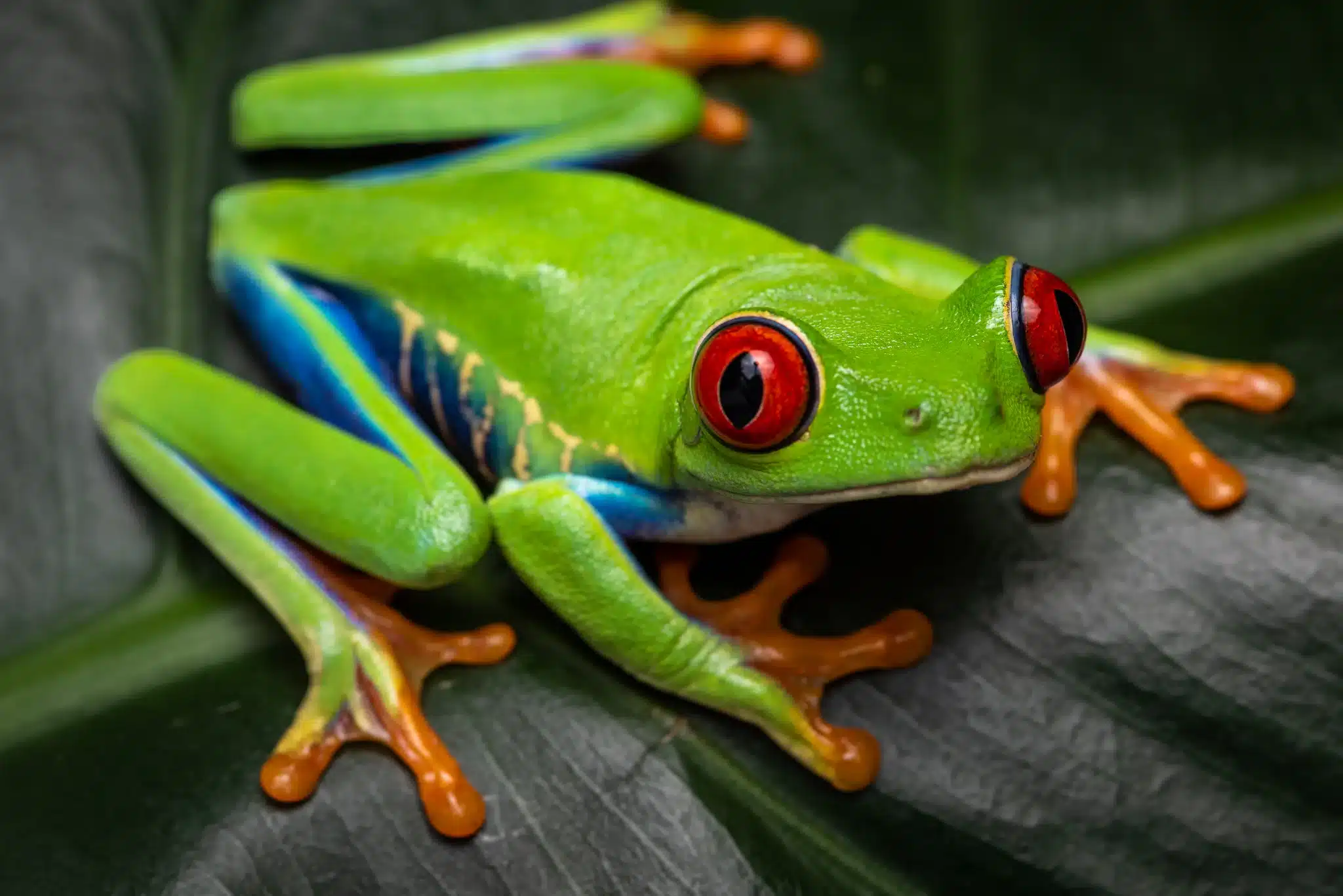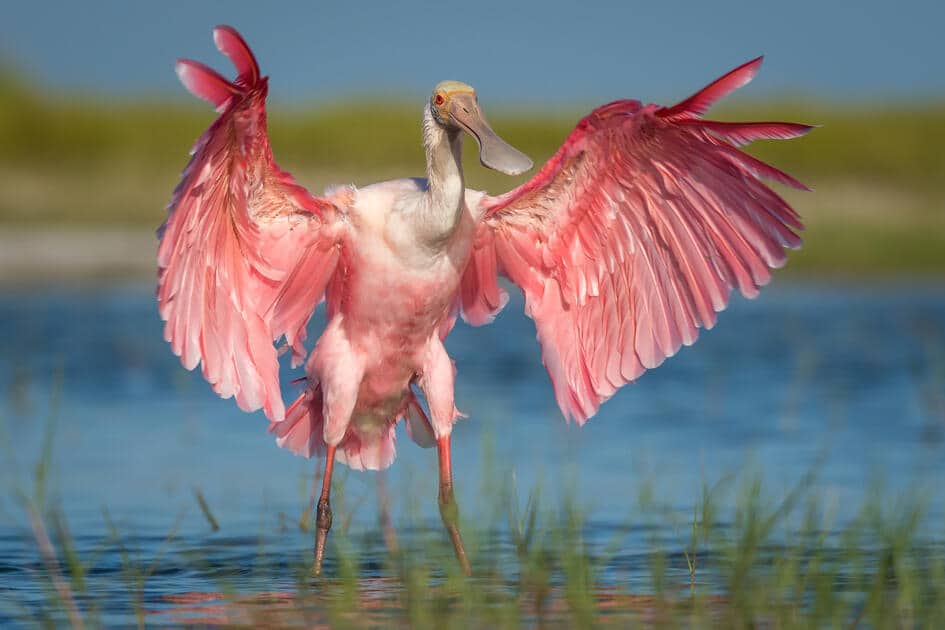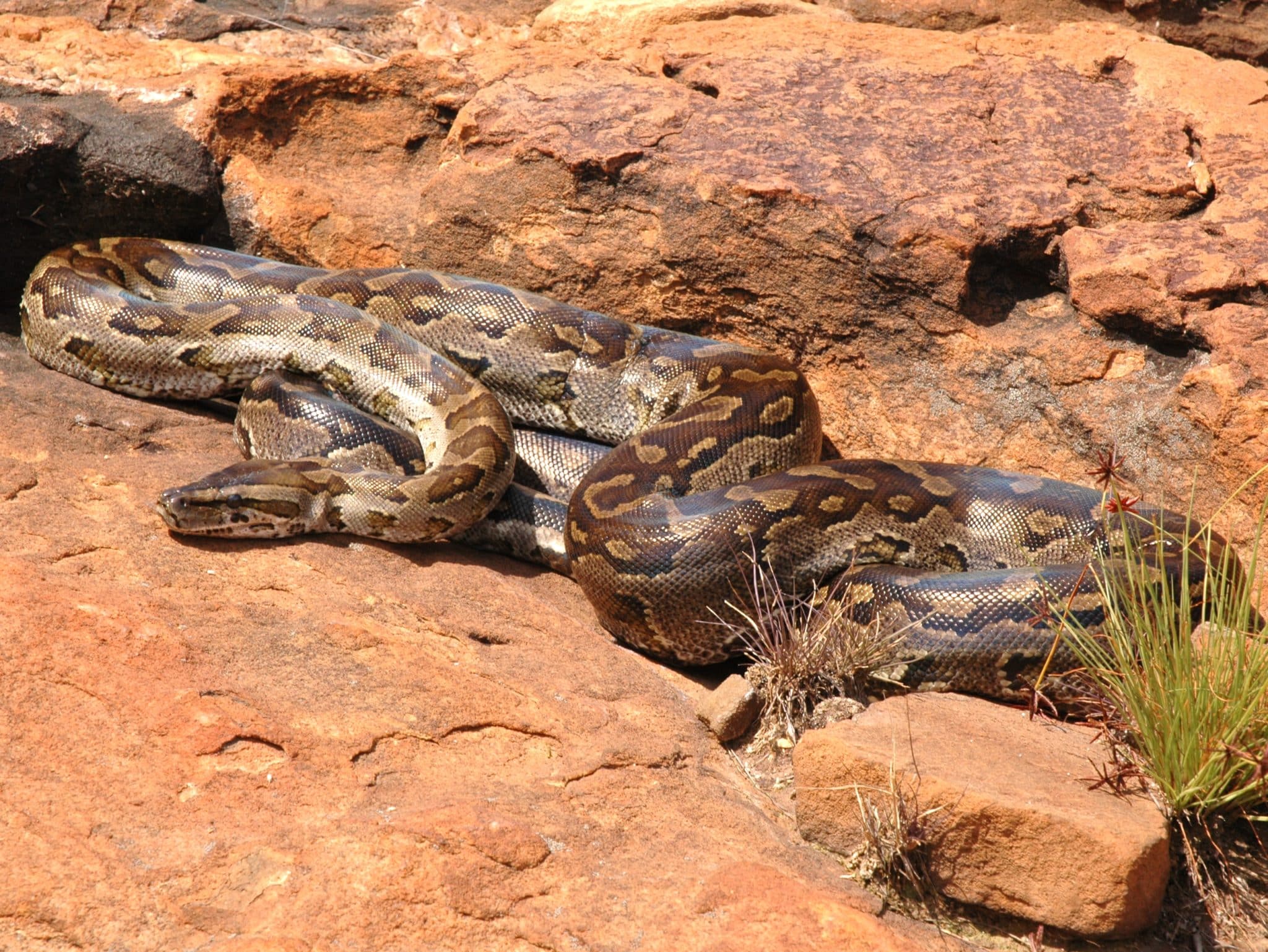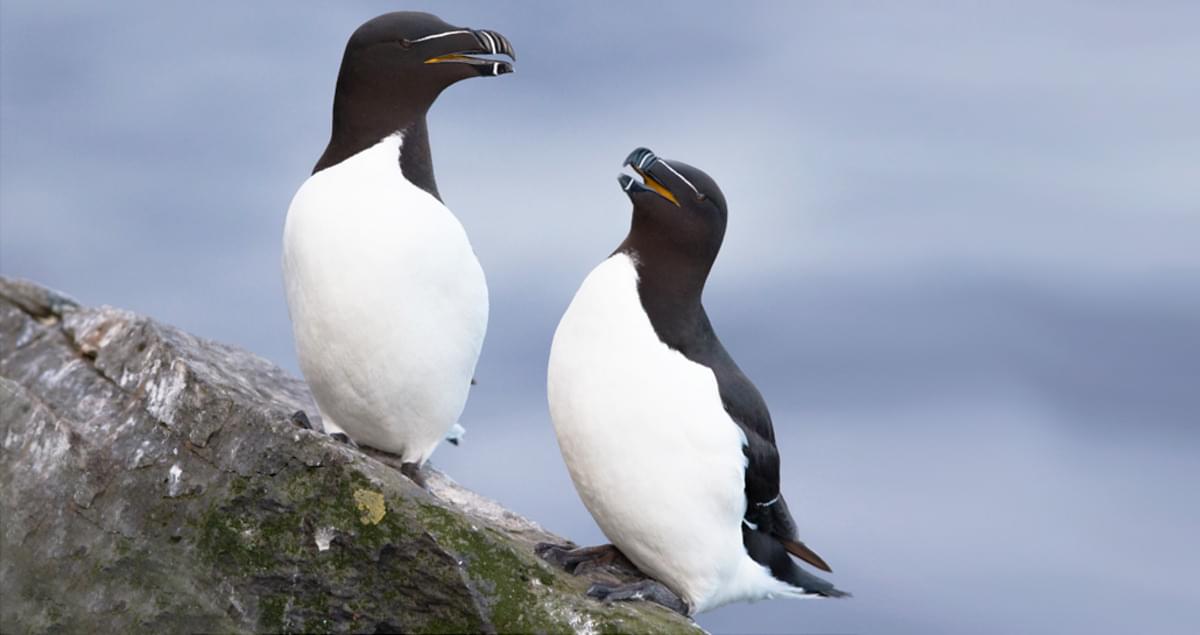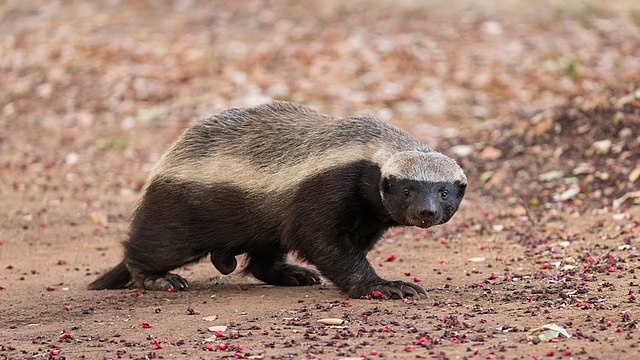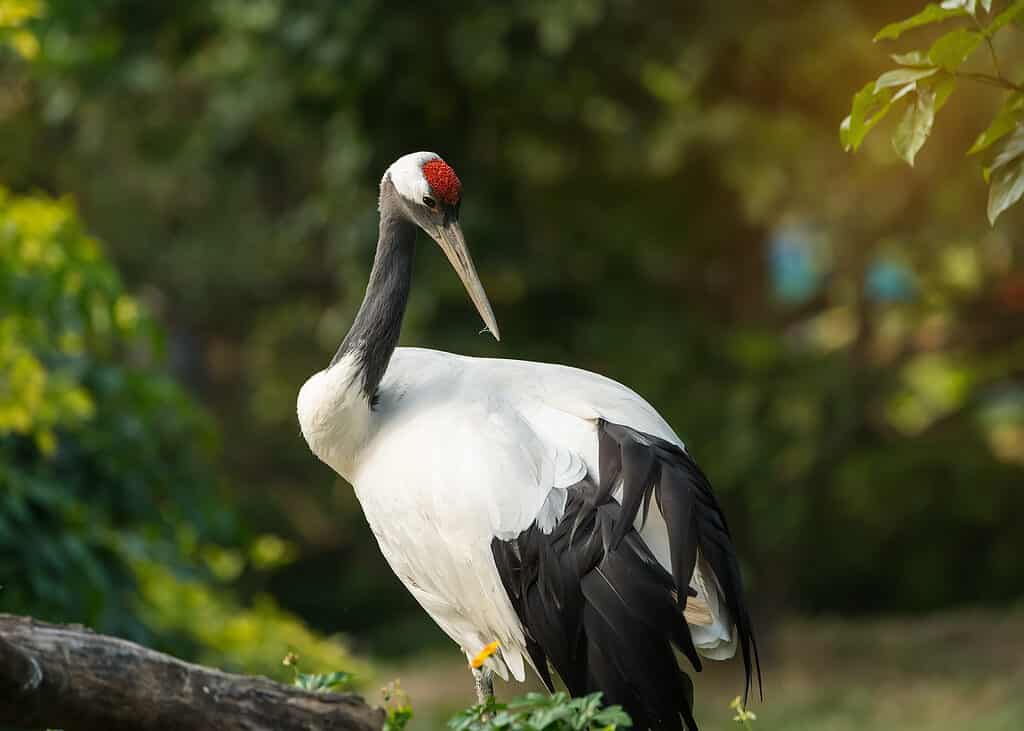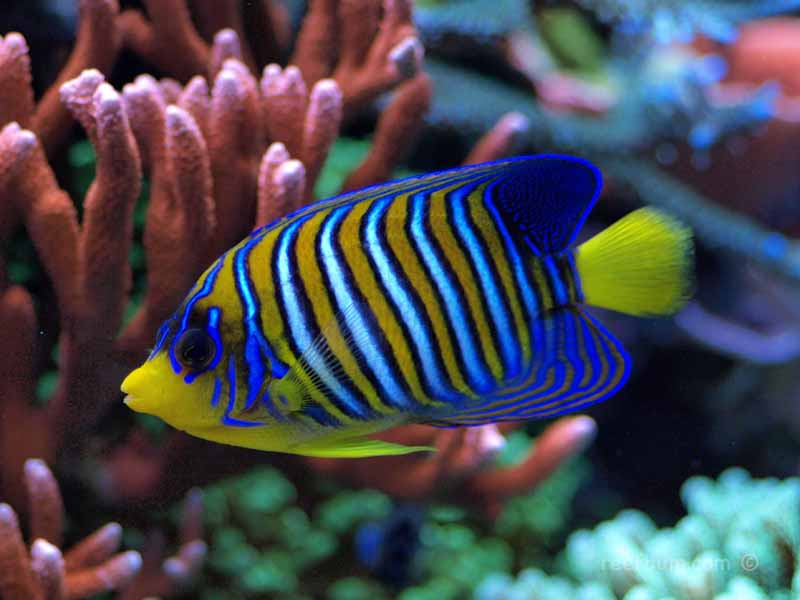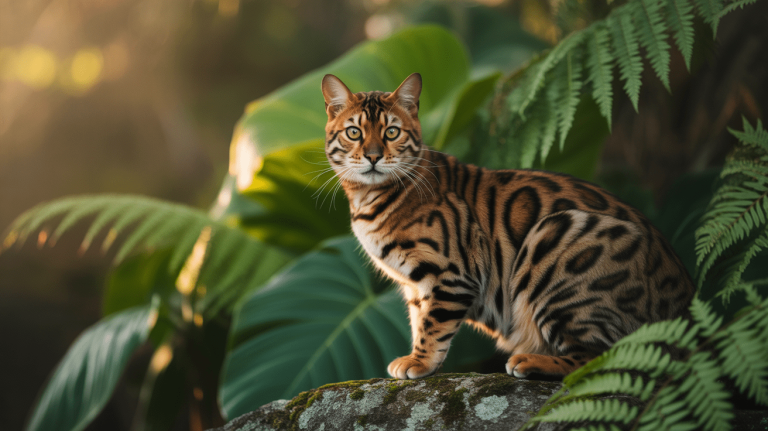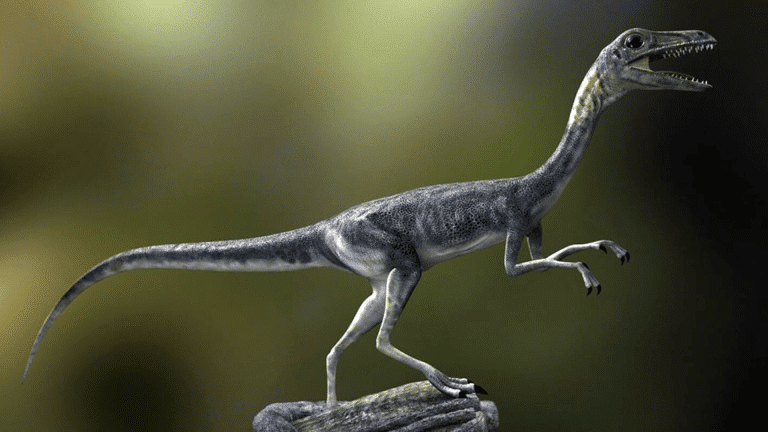Have you ever wondered how we can categorize animals based on alphabets? Classifying organisms based on the alphabet with which their names begin is possible.
This blog will take you on a journey where you will explore animals that begin with R. Though their names start with the same alphabet, they are found in various habitats.
From Red Pandas, found in forests, to Regal Angelfish, found in oceans, this list will give you a wholesome idea of amazing animal diversity.
By the end of the list, you will be amazed. Let us begin!
List of Animals that Start with R
1. Red Panda
Origin: Native to the eastern Himalayas and southwestern China.
Habitat: Found in temperate forests with bamboo understories.
Diet: Primarily herbivorous, feeding mainly on bamboo but consuming fruits, berries, eggs, and insects.
Size: Small-sized mammal, weighing between 4-6 kg (8.8-13.2 lbs).
Scientific Name: Ailurus fulgens.
Description: Red Pandas are known for their distinctive reddish-brown fur, bushy tails, and white face markings. They are agile climbers and spend most of their time in trees.
Interesting Facts:
- Despite their name, red pandas are not closely related to giant pandas. They belong to their own unique family, Ailuridae.
- They have a pseudo thumb, an extension of the wrist bone, that helps them grip bamboo while eating.
- Red pandas are crepuscular and are most active during dawn and dusk.
2. Ring-tailed Lemur
Origin: Endemic to the island of Madagascar.
Habitat: Found in various habitats, including dry forests, scrublands, and rocky outcrops.
Diet: Primarily herbivorous, feeding on fruits, leaves, flowers, and occasionally insects.
Size: Medium-sized primates, with males weighing around 2.5 kg (5.5 lbs) and females slightly smaller.
Scientific Name: Lemur catta.
Description: Ring-tailed lemurs are characterized by their long, bushy, black-and-white ringed tails and distinctive facial markings. They are highly social animals, often found in groups called troops.
Interesting Facts:
- Ring-tailed lemurs engage in “sun-worshipping” behavior, sitting upright facing the sun with their arms outstretched to absorb warmth.
- They have a complex social structure, with females being dominant over males within the troop.
- Ring-tailed lemurs use scent marking to communicate, rubbing their tails on various objects to leave their scent.
3. Raccoon
Origin: Native to North America.
Habitat: Found in various habitats, including forests, wetlands, and urban areas.
Diet: Omnivorous, feeding on a diverse diet, including fruits, nuts, insects, small mammals, and eggs.
Size: Medium-sized mammal, with adults typically weighing 5-12 kg (11-26 lbs).
Scientific Name: Procyon lotor.
Description: Raccoons are easily identifiable by their distinctive facial mask and ringed tail. They are highly adaptable and are known for their dexterous front paws.
Interesting Facts:
- Raccoons are excellent climbers and swimmers, with their nimble hands, allowing them to manipulate objects and even open containers.
- They are primarily nocturnal, being most active at night, but may also be active during the day, especially in urban areas.
- Raccoons have a highly developed sense of touch, with their front paws containing many sensory receptors.
4. Rhinoceros
Origin: Found in various regions of Africa and Asia.
Habitat: Inhabits grasslands, savannas, and tropical forests.
Diet: Herbivorous, feeding mainly on grasses, leaves, branches, and fruits.
Size: Large-sized mammal, with different species varying in size. The largest species, the white rhinoceros, can weigh up to 2,300 kg (5,070 lbs).
Scientific Name: Various species, including Ceratotherium simum (white rhinoceros) and Rhinoceros unicornis (Indian rhinoceros).
Description: Rhinoceroses are known for their massive size, thick skin, and one or two large horns on their snouts. They have poor eyesight but acute senses of smell and hearing.
Interesting Facts:
- Despite their large size and formidable appearance, rhinoceroses are herbivores and are generally docile unless provoked.
- Rhinoceros populations have been severely threatened by poaching, habitat loss, and human-wildlife conflict, leading to several species being endangered or critically endangered.
- Rhinos play a crucial role in their ecosystems as mega-herbivores, shaping the landscape through their feeding habits and providing habitats for various other species.
5. Red Fox
Origin: Native to Europe, Asia, and North America.
Habitat: Found in many habitats, including forests, grasslands, deserts, and urban areas.
Diet: Omnivorous, feeding on small mammals, birds, insects, fruits, and occasionally scavenging on carrion.
Size: Medium-sized carnivore, with adults typically weighing between 3-7 kg (6.6-15.4 lbs).
Scientific Name: Vulpes vulpes.
Description: Red foxes are characterized by their reddish-orange fur, pointed ears, and bushy tails. They are highly adaptable and can thrive in various environments.
Interesting Facts:
- Red foxes are known for their intelligence and cunning hunting techniques, which include stalking, pouncing, and digging to catch prey.
- They have a diverse vocal repertoire, including barks, screams, and howls, which they use for communication, especially during the breeding season.
- Red foxes are solitary hunters but may form small family groups during the breeding season, consisting of a mating pair and their offspring from previous years.
6. Rockhopper Penguin
Origin: Found in subantarctic and southern temperate regions, including the Falkland Islands, South Georgia, and New Zealand.
Habitat: Nests on rocky shores, cliffs, and subantarctic islands.
Diet: Carnivorous, feeding mainly on krill, fish, and squid.
Size: Small to medium-sized penguin, standing around 50-60 cm (20-24 inches) tall.
Scientific Name: Eudyptes chrysocome
Description: Rockhopper penguins are easily distinguished by their yellow crests, red eyes, and bright orange beaks. They are agile swimmers and climbers, using their powerful flippers and sharp claws to navigate rocky terrain.
Interesting Facts:
- Rockhopper penguins are known for their energetic and lively behavior, often hopping from rock to rock with remarkable agility.
- Their unique courtship ritual involves elaborate head bobbing, flipper waving, and vocalizations.
- Rockhopper penguins face threats from habitat degradation, overfishing of their prey, and oil pollution, leading to declines in some populations.
7. Red-Eyed Tree Frog
Origin: Native to tropical rainforests in Central and South America, including Costa Rica, Panama, and Colombia.
Habitat: Found in lowland rainforests near rivers and ponds, often dwelling in trees and vegetation.
Diet: Carnivorous, feeding on insects such as crickets, moths, and flies.
Size: Small-sized frog, with adults typically ranging from 5-7.5 cm (2-3 inches) in length.
Scientific Name: Agalychnis callidryas.
Description: Red-eyed tree frogs are renowned for their striking appearance, with vibrant green bodies, red eyes, and orange feet. They have adhesive toe pads that enable them to climb and grip onto leaves and branches.
Interesting Facts:
- Despite their bright colors, red-eyed tree frogs are primarily nocturnal, spending their days resting on leaves with their eyes closed to conserve moisture.
- They have a unique defensive behavior known as “flash-coloring,” where they suddenly open their eyes and reveal their bright red eyes as a startle response to potential predators.
- Red-eyed tree frogs lay their eggs on leaves overhanging water bodies, and when the tadpoles hatch, they drop into the water below to continue their development.
8. Roseate Spoonbill
Origin: Found in the Americas, including the southeastern United States, Central America, and South America.
Habitat: Inhabits marshes, swamps, and coastal lagoons, often nesting in colonies in mangrove forests.
Diet: Primarily carnivorous, feeding on aquatic invertebrates such as shrimp, crabs, and insects, which they catch using their unique spoon-shaped bills.
Size: Medium to large-sized wading bird, standing around 70-90 cm (28-35 inches) tall with a wingspan of 120-140 cm (47-55 inches).
Scientific Name: Platalea ajaja.
Description: Roseate spoonbills are characterized by their distinctive pink plumage, spoon-shaped bill, and long legs. They have a graceful, sweeping flight pattern and are often seen foraging in shallow waters.
Interesting Facts:
- The pink coloration of roseate spoonbills comes from the pigments in the crustaceans they consume.
- They are social birds and often forage in groups, using their spoon-shaped bills to sweep through the water in search of prey.
- Roseate spoonbills were once hunted extensively for their plumes and used in the fashion industry, leading to declining populations. Conservation efforts have helped stabilize their numbers in recent years.
9. Ruffed Lemur
Origin: Endemic to the island of Madagascar.
Habitat: Inhabits the eastern rainforests of Madagascar.
Diet: Primarily herbivorous, feeding on fruits, leaves, flowers, and occasionally insects.
Size: Medium-sized primate, with adults weighing 3-4 kg (6.6-8.8 lbs).
Scientific Name: Varecia spp. (species include Varecia variegata and Varecia rubra).
Description: Ruffed lemurs are named for the tufts of fur around their ears, which resemble ruffs or collars. They have a striking black-and-white coloration and a long, bushy tail.
Interesting Facts:
- Ruffed lemurs are one of the most vocal primates, with many calls, including roars, grunts, and wails, used for communication within their social groups.
- They are important seed dispersers in their habitat, as they consume various fruits and help spread seeds through their feces.
- Ruffed lemurs are highly endangered due to habitat loss, fragmentation, and hunting for the illegal pet trade.
10. Ribbon Seal
Origin: Found in the North Pacific Ocean, particularly in the Bering and Okhotsk Seas.
Habitat: Spends most of its time at sea, preferring the edges of pack ice and areas with open water.
Diet: Carnivorous, feeding primarily on fish, squid, and crustaceans.
Size: Medium-sized seal, with males reaching lengths of up to 1.6 meters (5.2 feet) and females slightly smaller.
Scientific Name: Histriophoca fasciata.
Description: Ribbon seals are named for the distinctive ribbon-like patterns on their coats, characterized by dark bands against a lighter background. They have large, dark eyes and streamlined bodies adapted for swimming.
Interesting Facts:
- Ribbon seals are migratory animals, traveling long distances between their breeding and feeding grounds, often following the movement of sea ice.
- They are solitary animals outside the breeding season, with individuals coming together only briefly for mating.
- Ribbon seals are considered vulnerable to climate change, as their dependence on sea ice makes them susceptible to habitat loss and changes in prey availability.
11. Rock Python
Origin: Found in sub-Saharan Africa, including countries such as Nigeria, Cameroon, and Uganda.
Habitat: Inhabits a variety of ecosystems, including forests, grasslands, and savannas.
Diet: Carnivorous, feeding on a wide range of prey, including rodents, birds, reptiles, and occasionally larger mammals.
Size: Large snake species, with adults reaching lengths of up to 6 meters (20 feet) or more.
Scientific Name: Python sebae.
Description: Rock pythons have a distinctive pattern of dark blotches against a lighter background, providing effective camouflage. They have heat-sensitive pits along their jaws, which help them detect prey.
Interesting Facts:
- Rock pythons are powerful constrictors, using their muscular bodies to coil around and suffocate their prey before swallowing it whole.
- They are primarily nocturnal hunters, relying on stealth and ambush to catch their prey.
- Rock pythons play an important ecological role as top predators, helping regulate prey populations and maintain ecosystem balance.
12. Razorbill
Origin: Found in the North Atlantic Ocean, particularly in the coastal regions of Europe, North America, and Greenland.
Habitat: Nests on cliffs and rocky outcrops along coastal areas, often forming large colonies.
Diet: Carnivorous, feeding mainly on fish such as sand eels, herring, and capelin, which they catch by diving underwater.
Size: Medium-sized seabird, measuring around 38-43 cm (15-17 inches) in length.
Scientific Name: Alca torda.
Description: Razorbills have distinctive black and white plumage, with black on their backs and wings and white on their underparts. They have a thick, black bill with a white line along the edge.
Interesting Facts:
- Razorbills are excellent divers, capable of diving to depths of up to 120 meters (400 feet) in search of prey.
- They have a unique breeding behavior where pairs form long-term bonds and return to the same nesting sites year after year.
- Razorbills are vulnerable to threats such as habitat disturbance, pollution, and climate change, particularly changes in sea temperature and food availability.
13. Red-tailed Hawk
Origin: Found throughout North and Central America.
Habitat: Inhabits various habitats, including forests, grasslands, deserts, and urban areas.
Diet: Carnivorous, feeding mainly on small mammals such as rodents, birds, reptiles, and occasionally carrion.
Size: Medium to large-sized bird of prey, with wingspans ranging from 1.1 to 1.4 meters (3.5 to 4.5 feet).
Scientific Name: Buteo jamaicensis.
Description: Red-tailed hawks are named for their distinctive reddish-brown tails prominently displayed during flight. They have broad wings and keen eyesight, allowing them to soar and hunt effectively.
Interesting Facts:
- Red-tailed hawks are one of the most widespread hawks in North America and are often seen perched on poles, trees, or soaring overhead.
- They are renowned for their high-pitched, piercing scream, often used as a stock sound effect in movies and television.
- Red-tailed hawks are monogamous and form long-term breeding pairs, often returning to the same nesting territory year after year.
14. Ratel (Honey Badger)
Origin: Found in various regions of Africa and parts of Southwest Asia.
Habitat: Inhabits various habitats, including savannas, forests, and semi-arid areas.
Diet: Omnivorous, feeding various prey, including small mammals, birds, reptiles, insects, and honey.
Size: Medium-sized carnivore, weighing 9 to 16 kg (20 to 35 lbs).
Scientific Name: Mellivora capensis.
Description: Ratels, also known as honey badgers, have a distinctive black body with a broad white stripe running from their head to the base of their tail. They have powerful jaws and sharp claws, making them formidable predators.
Interesting Facts:
- Ratels are notorious for their fearless and aggressive behavior, often taking on larger adversaries such as lions and hyenas.
- They can break open beehives and consume the larvae, honey, and bees, hence their nickname “honey badger.”
- Ratels are primarily solitary animals, only coming together to mate. Females raise their young in dens hidden among rocks or in hollow trees.
15. Red-crowned Crane
Origin: Found in East Asia, particularly China, Japan, and Korea.
Habitat: Inhabits wetlands, marshes, and rice paddies, preferring areas with tall grasses and shallow water.
Diet: Omnivorous, feeding on various foods, including plants, seeds, insects, fish, and small mammals.
Size: Large bird, standing up to 1.5 meters (5 feet) tall with a wingspan of over 2 meters (6.5 feet).
Scientific Name: Grus japonensis.
Description: Red-crowned cranes are named for the distinctive patch of red skin on their heads, which contrasts with their white plumage. They have long, graceful necks and legs and a loud, trumpeting call.
Interesting Facts:
- Red-crowned cranes are symbols of longevity, fidelity, and good fortune in many East Asian cultures and are featured prominently in traditional art and folklore.
- They perform elaborate courtship displays, which include dancing, bowing, and calling, to strengthen pair bonds and establish territories.
- Red-crowned cranes are among the rarest crane species and are considered endangered due to habitat loss, poaching, and collisions with power lines.
16. Regal Angelfish
Origin: Found in the Indo-Pacific region, including the Great Barrier Reef, Indonesia, and the Philippines.
Habitat: Inhabits coral reefs and rocky crevices, typically in clear, tropical waters.
Diet: Omnivorous, feeding on various foods, including algae, small invertebrates, and zooplankton.
Size: Medium-sized marine fish, growing up to 20-25 cm (8-10 inches) in length.
Scientific Name: Pygoplites diacanthus
Description: Regal angelfish are characterized by their vibrant coloration, with blue and yellow stripes on their body and a distinct black spot on the rear part of their dorsal fin. They have elongated bodies and a small mouth adapted for picking at small organisms.
Interesting Facts:
- Regal angelfish are popular in the aquarium trade due to their striking appearance, but they can be challenging to keep in captivity due to their specific dietary and environmental requirements.
- They are known to form monogamous pairs during the breeding season, with both parents participating in caring for the eggs and larvae.
- Regal angelfish are sensitive to water quality and temperature changes, making them indicators of reef health in their natural habitat.
17. Red-Crested Cardinal
Origin: Native to South America, particularly in countries such as Brazil, Argentina, and Paraguay.
Habitat: Inhabits various habitats, including forests, shrublands, and urban areas, often near water sources.
Diet: Omnivorous, feeding on seeds, fruits, insects, and small invertebrates.
Size: Medium-sized songbird, measuring around 17-20 cm (6.7-7.9 inches) in length.
Scientific Name: Paroaria coronata.
Description: Red-crested cardinals are named for the bright red crest on their heads, contrasting with their gray bodies and black face masks. They have strong, conical bills adapted for cracking seeds and nuts.
Interesting Facts:
- Red-crested cardinals are known for their melodic songs, which consist of whistles, trills, and chirps, often performed from elevated perches.
- They are highly social birds, often seen in small flocks or pairs, and communicate through vocalizations and body postures.
- Red-crested cardinals are frequently kept as cage birds due to their attractive plumage and pleasant songs, and they have been introduced to several other regions outside their native range.
18. Royal Gramma
Origin: Found in the Western Atlantic Ocean, particularly in the Caribbean Sea and the Gulf of Mexico.
Habitat: Inhabits coral reefs and rocky outcrops, usually in shallow waters with plenty of hiding spots.
Diet: Carnivorous, feeding on small crustaceans, zooplankton, and tiny fish.
Size: Small marine fish, reaching lengths of up to 8 cm (3 inches).
Scientific Name: Gramma loreto.
Description: Royal grammas have vibrant coloration, with purple to violet bodies transitioning to bright yellow near the head and tail. They have a distinct black spot on their dorsal fin and yellow stripes on their faces.
Interesting Facts:
- Royal grammas are protogynous hermaphrodites, meaning they start life as females and may transition to males later in life, often in response to social cues or changes in the population’s sex ratio.
- They are peaceful fish but can be territorial, especially around their preferred hiding spots or nesting sites.
- Royal grammas are popular in the aquarium trade due to their striking appearance, small size, and ease of care.
19. Rainbow Lorikeet
Origin: Native to Australia, particularly along the eastern coast and northern regions.
Habitat: Inhabits various habitats, including forests, woodlands, parks, and urban areas.
Diet: Omnivorous, feeding on nectar, pollen, fruits, seeds, and insects.
Size: Medium-sized parrot, measuring around 25-30 cm (10-12 inches) in length.
Scientific Name: Trichoglossus moluccanus.
Description: Rainbow lorikeets are known for their colorful plumage, featuring a combination of bright green, blue, yellow, orange, and red feathers. They have a brush-tipped tongue adapted for feeding on nectar and pollen.
Interesting Facts:
- Rainbow lorikeets are highly social birds, often seen in large, noisy flocks that travel together for food and water.
- They have a distinctive screeching call that can be heard over long distances, especially during the early morning and late afternoon.
- Rainbow lorikeets are important pollinators in their native habitats, as they feed on nectar and transfer pollen between flowers while foraging.
20. Ribbon Eel
Origin: Found in the Indo-Pacific region, particularly in coral reefs and coastal waters from East Africa to the Pacific Islands.
Habitat: Inhabits coral reefs, lagoons, and sandy bottoms, often in crevices or burrows.
Diet: Carnivorous, feeding mainly on small fish and crustaceans.
Size: Medium-sized eel, reaching lengths up to 100-130 cm (39-51 inches).
Scientific Name: Rhinomuraena spp. (species include Rhinomuraena quaesita).
Description: Ribbon eels have a long, ribbon-like body with a pointed snout and a dorsal fin that extends along most of its length. They come in three color phases: juveniles are jet black, females are yellow with a black snout, and males are blue with a yellow dorsal fin.
Interesting Facts:
- Ribbon eels are protandrous hermaphrodites, meaning they start life as males and may transition to females as they mature. Males can also change coloration from black to blue during this transition.
- They are secretive and solitary animals, spending much time hidden in caves or crevices on the reef.
- Ribbon eels have a unique hunting behavior where they extend their jaws and open their mouths wide to create a vacuum, sucking in prey that ventures too close.
Summing It Up
The diversity of organisms around us can not be covered in one list. We are surrounded by many creatures yet to be discovered and classified.
However, this list enabled us to appreciate the huge biodiversity on this planet.
It is important to become sensitive towards biodiversity and make efforts in conservation.
We may have come to the end of the list, but the animals beginning with R do not end here. You can explore on your own.
Comment and share your views regarding your favorite animals from the list.

